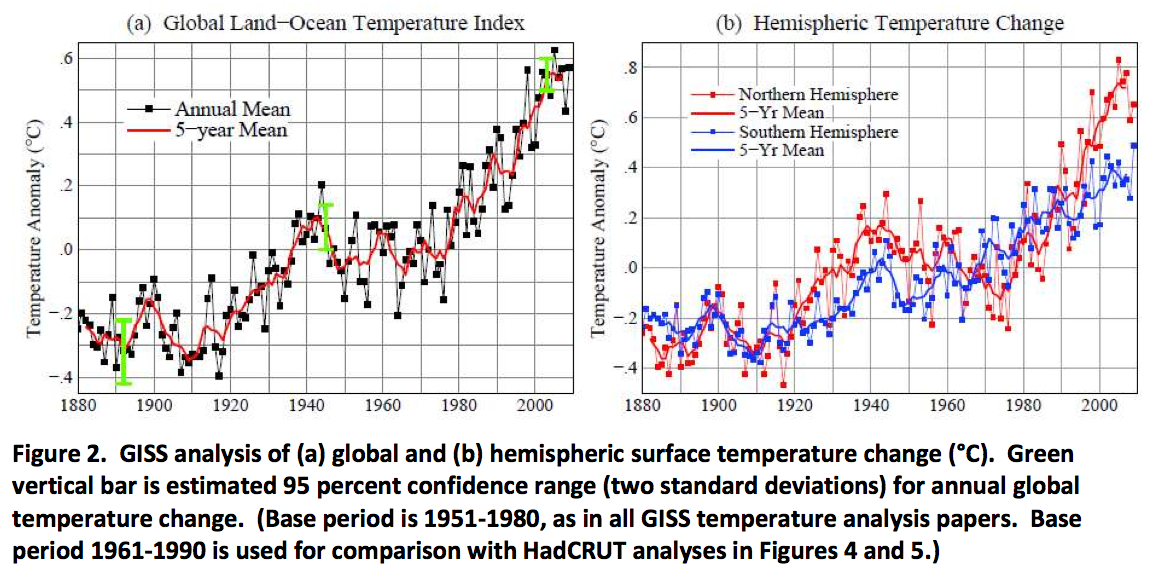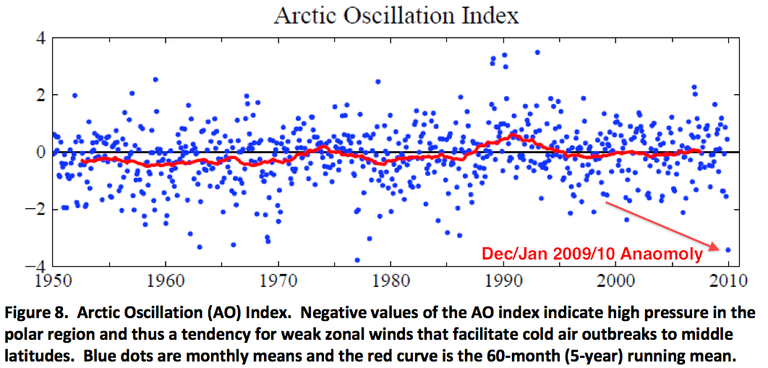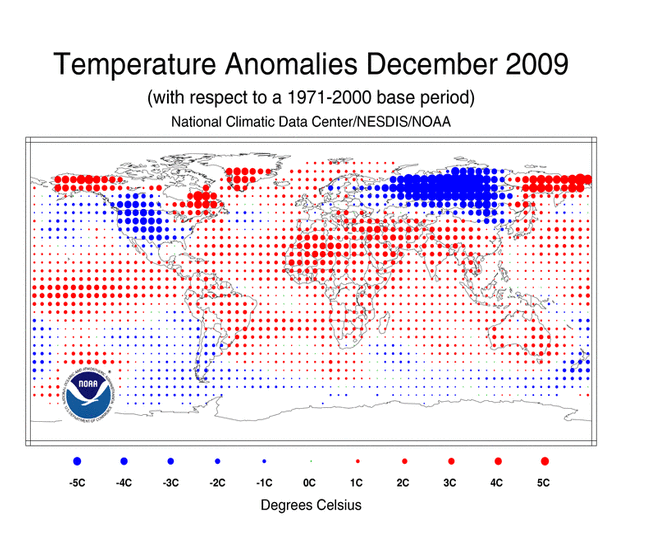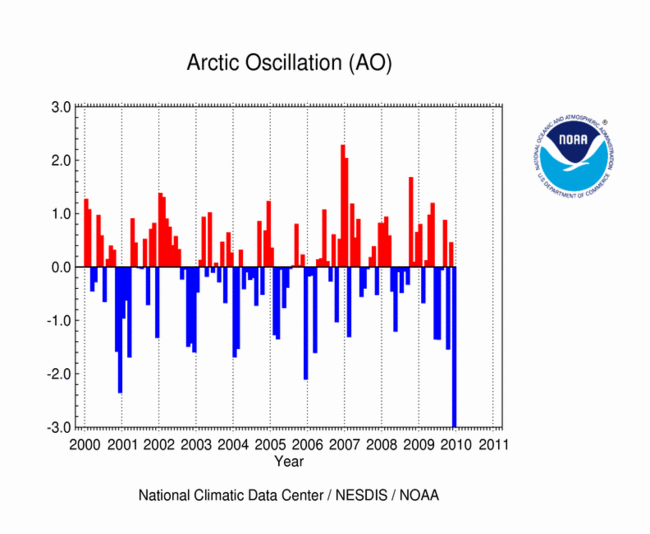So much for global cooling: 2009 tied for second warmest year in the instrumental record. The Arctic Oscillation was in a strong negative phase this month causing cooler temperatures in North America, Europe and Russia, and unusually warm temperatures in the Arctic, Alaska, Canada, Greenland, North Eastern Russia, The Middle East, Africa, Asia, Australia, and much of South America.
Global Mean Temperature Summary for 2009
2009 Ties for Second Warmest Year
GISS data shows that 2009 was tied for the second warmest year in the 130 years of near-global instrumental measurements – and the Southern Hemisphere had its warmest year in that entire period.
Arctic Oscillation Anomaly 2009/2010
Some have said how can the globe be warming if it’s so cold out? It is important to remember that global warming does not get rid of seasons, but it does affect them.
Source: James Hansen Summary PDF
Global Temperature Anomalies December 2009
Global warming is ‘global’ not regional. The recent cold temperatures experienced in North America, Europe and Russia are not being shared all around the world. In fact the Arctic itself is unusually warm along with most of the rest of the world.
It is important to note that much of the rest of the world is experiencing warmer than average temperatures in relation to the base period. In the northern hemisphere, Alaska, Canada, Greenland, and North Eastern Russia are all unusually warm. In the mid latitudes and southern hemisphere Africa, Australia, Asia, and most of South America are also unusually warm for the time period.




